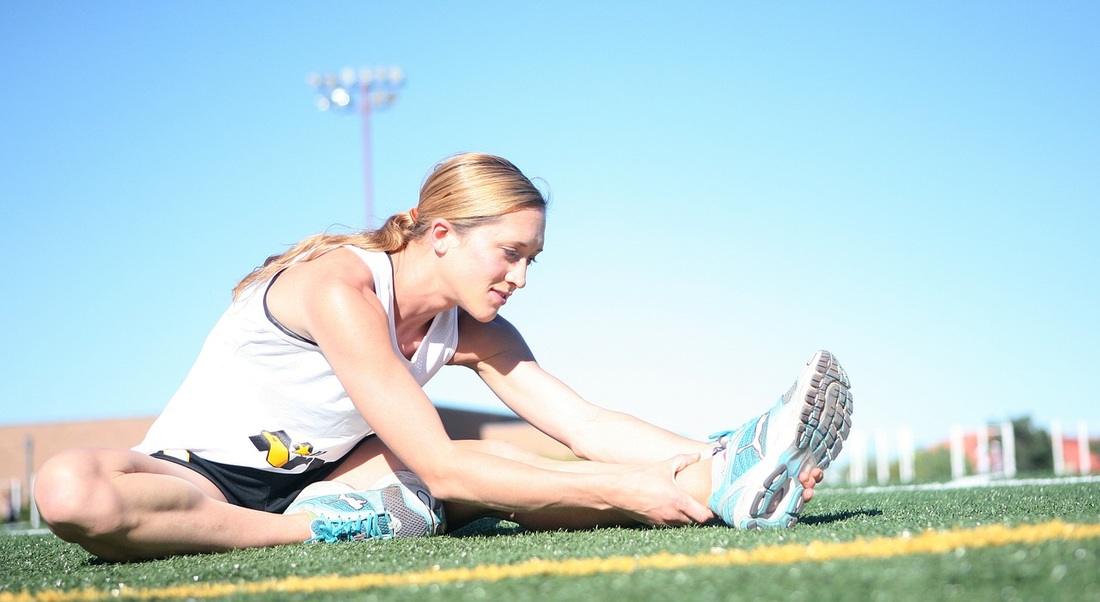|
Ask Dr. Sarah is a new series on the Bodylab blog, answering your questions about health and wellness. Today’s post is our first in the series: “Hi Dr. Sarah, I often find that my muscles feel very tight, and I’m wondering what causes this. Is there something I can do to prevent it?” -Kristen G.” Hi Kristen, There are a few different causes for tight muscles. If left unaddressed, muscle tightness can cause decreased range of motion and postural misalignment, so it’s important to pay attention when you feel your muscles become tight. I’ll break down each of the most common causes, along with some helpful tips to prevent and treat it: Dehydration: When you’re not drinking enough water throughout the day, your body isn’t being replenished with the proper nutrients. The water in our tissues is needed for this process, and without enough lubrication, the body then uses water from muscles and skin, causing dehydration, and sometimes tight muscles. Inactivity:
Exercise and general movement is important for overall health, and that includes muscle health. When your muscles are inactive they can seize up and cause tightening, as well as a slew of other health problems including deep-vein thrombosis (more on that shortly). Even short bursts of activity after long periods of inactivity may cause muscle tightening, which is another reason that it is important to make time for regular exercise throughout each day. Sitting too much: Much like general inactivity, sitting too much can cause a great deal of health issues. You’ve probably seen many articles published in the past year, showing the importance of getting up and moving around often for those who work at desks all day, and the issues that can occur when a person stays in the sitting position for a long period of time. One such problem is muscle tightening; another is deep-vein thrombosis, which is when a blood clot occurs due to inactive muscles. This can be dangerous, so standing up and walking around whenever possible is a good preventative measure. Prolonged sitting causes inflammation in the joint and muscles around the back and pelvis, which can lead to protective muscle spasm and scar tissue build-up. The fibrous scar tissue from taut muscle bands and trigger points causes the muscles to dysfunction and spasm, leading to compression of blood vessels and decreased blood flow - this is what triggers pain. Further Prevention and Treatment: Exercise is the key to preventing tight muscles, as long as the body is not being pushed too hard. Stretching is also very important, but it is easy to make the mistake of stretching muscles before they’ve been properly warmed up enough. Stretching after a five minute warm-up is most effective and will keep muscles loose and ready to work. Water intake is also a preventative measure, as the average adult should be drinking 8 glasses per day. This will help lubricate the entire body and keep it running properly. Of course, chiropractic is effective in the treatment of tight muscles, specifically myofacial release therapy. This targets certain muscles to activate them and decrease the scar tissue build-up which cause that tight feeling you’re experiencing. Another great option is the use of massage. Massage is an effective way to not only loosen already tight muscles, but also to prevent muscle tightness – regular massage therapy can help keep muscles loose and pliable. At Bodylab, both Dr. Richard and I are Chiropractors as well as Registered Massage Therapists. We offer several different types of massage therapy and chiropractic methods, often combining techniques for best individual results. For more information, visit our website or book an appointment online. Dr. Sarah Hopkins To ask your question for Dr. Sarah, leave a comment below or email [email protected]
0 Comments
|
Archives
March 2023
Categories
All
|
|
Location
Bodylab Recovery Science 52 George St, St. Catharines, ON L2R 5N6 Parking off Beech St. Call: (905) 228-3130 Email: [email protected] |
Clinic Hours
Monday 9:00 AM – 7:00 PM Tuesday 9:00 AM – 6:00 PM Wednesday 9:00 AM – 7:00 PM Thursday 9:00 AM – 6:00 PM Friday 8:00 AM – 5:00 PM Saturday Upon Request |


 RSS Feed
RSS Feed
